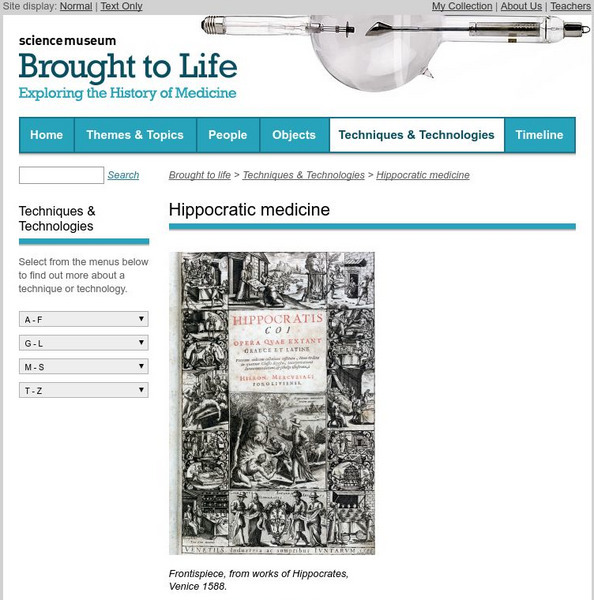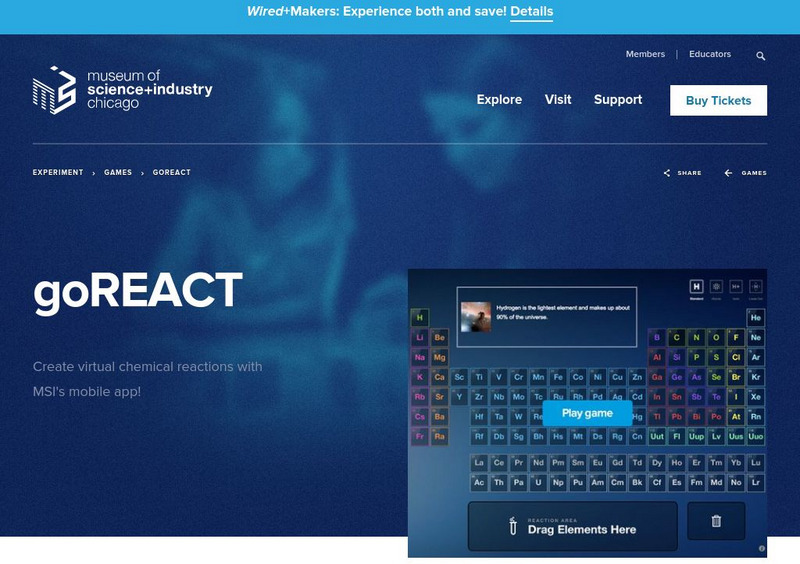Science Museum, London
Science Museum: Online Stuff: Atomic Firsts
Read about three famous British atomic physicists, each of whom won a Nobel Prize. J.J. Thompson discovered the electron, Ernest Rutherford successfully split an atom, and George Paget Thomson proved that electrons had wave-like properties.
Science Museum, London
Science Museum: Online Stuff: Huygens' Clocks
Find out about Christiaan Huygens who built the world's first pendulum clock in 1656. The pendulum clock became the most accurate clock in the world for nearly 300 years.
Other
Science Museum of Minnesota: Making a Jitterbug [Pdf]
You can make a simple robot using a few simple materials. The directions come from an exhibit on robots at the Science Museum of Minnesota.
Science Museum of Minnesota
Science Museum of Mn Lesson Plan: Lung Model
In this lesson plan site, students do an experiment, read, and view pictures to learn about the parts of the body that are involved in the breathing process. Contains related links.
The Franklin Institute
Franklin Institute Science Museum: Plastids
Bulleted info on chloroplasts, chromoplasts and leukoplasts.
Science Museum, London
Science Museum: Online Stuff: Marie Curie and the History of Radioactivity
Read about Nobel Prize winner, Marie Curie's life, and her historical work with radioactivity.
Science Museum, London
Science Museum: Spaghetti Challenge
In this race against the clock, students learn the importance of good design technique and distribution of mass as they work in teams to build the highest tower possible out of dried spaghetti and marshmallows.
Other
Hong Kong Space Museum
Besides an introduction to exhibitions and events at the museum, the site provides a guide to stargazing, an astronomy FAQ, space news, virtual tours (see site map) and research resources (including Chinese-English star and constellation...
University of Florida
Florida Museum of Natural History: Physical Science
This guide focuses on four physical science topics that fascinate children and scientists alike. They are motion, magnets, sound, and light. With your guidance and support, these topics provide children with many opportunities to explore...
Canada Science and Technology Museum
Canada Science and Technology Museum: Background Information for Electricity
The Canada Science and Technology Museum answers some of the most common questions about electricity. For example, get the definition of electricity, the difference between alternating and direct currents, and learn how a fuse works.
Smithsonian Institution
National Museum of American History: Teaching Math & Science in Age of Sputnik
Why did the Soviet Union's launch of Sputnik throw the fields of mathematics and science into tremendous demand in the United States? Find the many ways this revolutionary event impacted children from the 1950s to become the...
National Women’s History Museum
National Women's History Museum: Mary Baker Eddy
Mary Baker Eddy founded a popular religious movement during the 19th century, Christian Science.
Children's Museum
The Children's Museum of Indianapolis: Beyond Spaceship Earth
This unit of study explores the International Space Station through STEM experiences in space science education. Students become a spacecraft crew and launch from Earth to discover how microgravity affects the orbit of the International...
Science Museum, London
Science Museum: Typewriters
This detailed and thorough site traces the history of the typewriter beginning in the 1700's. The text is supplemented with pictures of old typewriters and an interesting commentary is made about the impact of the typewriter on the role...
Science Museum, London
Science Museum: Brought to Life: Hippocratic Medicine
A brief overview of Hippocratic medicine.
TED Talks
Ted: Ted Ed: The Hidden Worlds Within Natural History Museums
When you think of natural history museums, you might picture exhibits filled with ancient lifeless things, like dinosaurs or meteorites. But behind that educational exterior, there are hidden laboratories where scientific breakthroughs...
Other
Museum of Pop Culture
The Museum of Pop Culture (formerly the Science Fiction Museum) is located in Seattle, Washington, and this site provides information on the exhibits connected with the museum and information on educational outlets at the museum.
University of California
Uc Museum of Paleontology: Understanding Science Conceptual Framework
This website is a resource for teachers to guide their instruction by giving them a list of conceptual understandings or students regarding the nature and process of science according to grade level.
Smithsonian Institution
National Museum of Natural History: Department of Mineral Sciences Collections
Search the database of the Smithsonian's National Museum of Natural History for gems & minerals, meteorites with images, or petrology & volcanology.
Museum of Science
Museum of Science and Industry: Go React
Experience chemical reactions with this virtual drag-and-drop laboratory. This site allows you to create chemical reactions by combining elements from the Periodic Table.
Canada Science and Technology Museum
Canada Science and Technology Museum: Background Information for Canada in Space
Canada has accomplished some important achievements in space technology. Use the links to explore the main topics. Educators will appreciate connecting to the school program "Space: Space Exploration" on this site.
Children's Museum
The Children's Museum of Indianapolis: Cells the Living School
Learners compare the parts of a cell and their functions to their school to understand how a cell's parts work in unison to be effective in the body.
Smithsonian Institution
National Museum of Natural History: Department of Mineral Sciences Collections
A searchable database of minerals and gems. Search by keyword or pre-defined characteristics. A Help section is available as well for aid in searching.
University of Oxford (UK)
Museum of History of Science: Roger Bacon
In this portion of the Oxford Virtual Science Walk, a single paragraph briefly touches on Roger Bacon's life, achievements, and predictions. Illustration of the now-demolished study and observatory of Bacon.

![Science Museum of Minnesota: Making a Jitterbug [Pdf] Activity Science Museum of Minnesota: Making a Jitterbug [Pdf] Activity](http://content.lessonplanet.com/resources/thumbnails/410020/large/bwluav9tywdpy2symdiwmduymc0yndiyoc0xawvjbnhrlmpwzw.jpg?1589984819)










